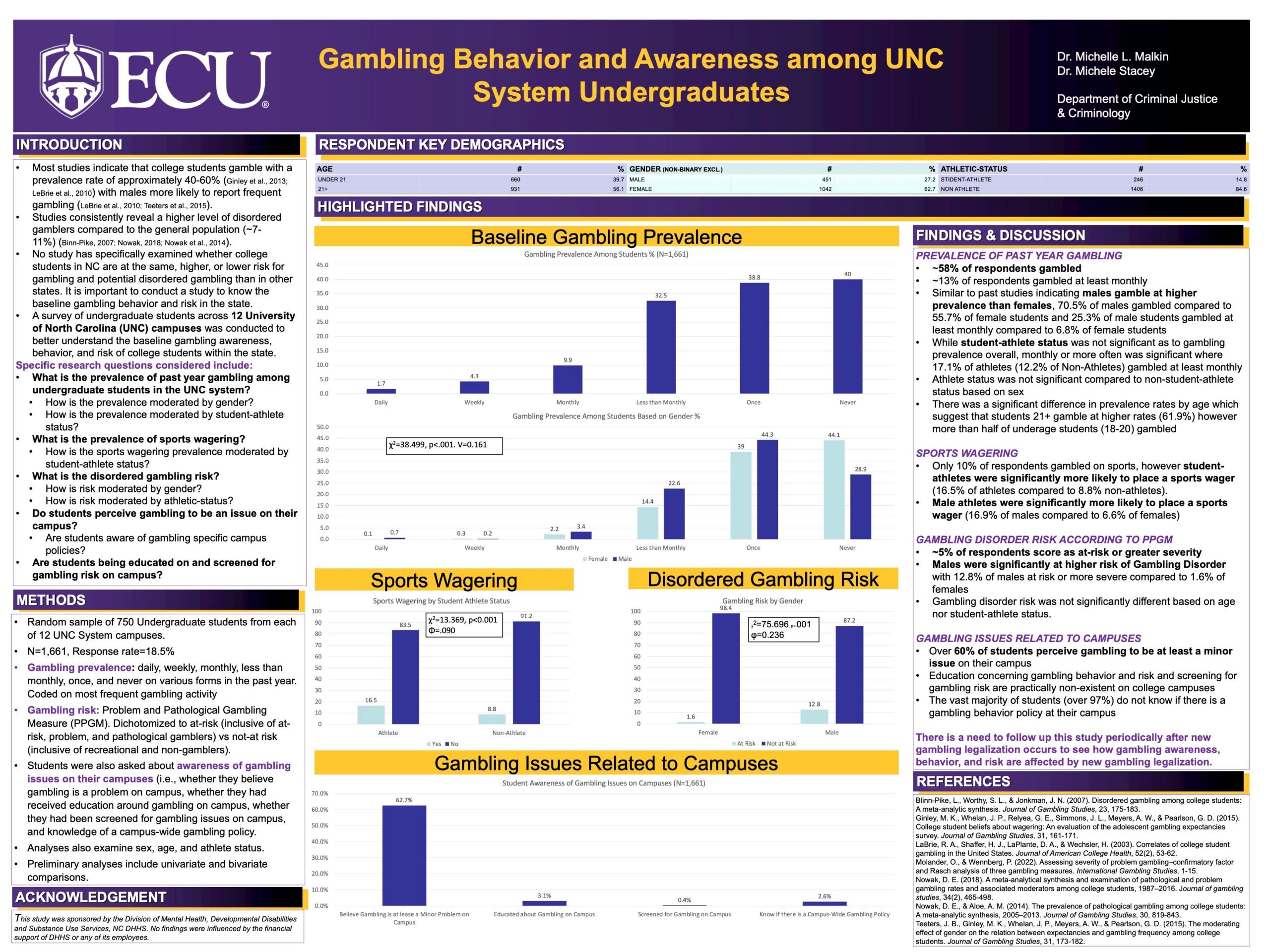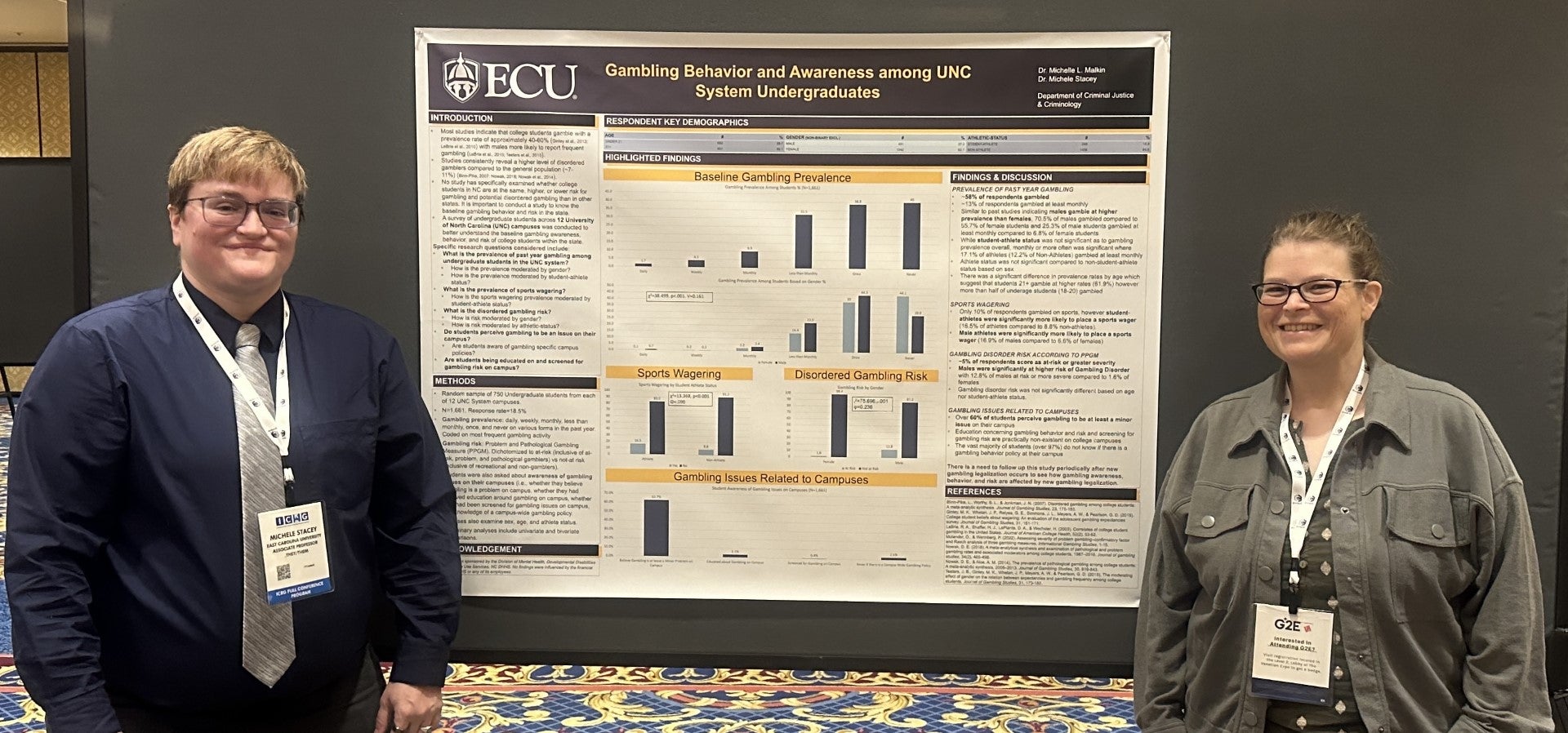North Carolina Baseline Study of College Student Gambling Awareness, Behavior and Risk

The following is based on an ongoing study funded by the Division of Mental Health, Developmental Disabilities and Substance Use Services, NC DHHS being conducted by Dr. Michelle L. Malkin (GRPI Director) and Dr. Michele Stacey (affiliated faculty) looking at Gambling Behavior and Awareness among UNC System Undergraduates. The final study will include approximately 3,000 North Carolina undergraduate students from both community colleges and universities across the state.
Based on a preliminary analysis of 1,661 undergraduate students across 12 UNC campuses:
Approximately 58% of respondents gambled in the past year, with about 13% of respondents reporting gambling at least monthly. Similar to past studies indicating males gamble at higher prevalence than females, 70.5% of males gambled compared to 55.7% of female students. Additionally, 25.3% of male students gambled at least monthly compared to 6.8% of female students. While student-athlete status was not significant as to gambling prevalence overall, monthly or more often was significant where 17.1% of athletes (compared to12.2% of non-athletes) gambled at least monthly. There was a significant difference in prevalence rates by age which suggests that students 21+ gamble at higher rates (61.9%) however more than half of underage students (18-20) gambled in the past year.
Prior to the legalization of sports wagering statewide in North Carolina, this study found that about 10% of undergraduate college students gambled on sports, however student- athletes were significantly more likely to place a sports wager (16.5% of athletes compared to 8.8% non-athletes). Male athletes were significantly more likely to place a sports wager (16.9% of males compared to 6.6% of females).
With approximately 5.5% of all North Carolina adults at risk for gambling disorder, this study found that ~5% of undergraduate college students also score as at-risk or greater severity for gambling disorder. This risk is much more prevalent among male undergraduate students, who were significantly at higher risk of Gambling Disorder with 12.8% of male undergraduate students at risk or more severe compared to only 1.6% of females. Gambling disorder risk was not significantly different based on age nor student-athlete status.
Preliminary results also show that over 60% of undergraduate students perceive gambling to be at least a minor issue on their campus. However, education concerning gambling behavior and risk and screening for gambling risk are practically non-existent on college campuses and the vast majority of students (over 97%) do not know if there is a gambling behavior policy on their campus.

Research Poster presenting at International Conference on Gambling and Responsible Gaming, ICRG, 2023